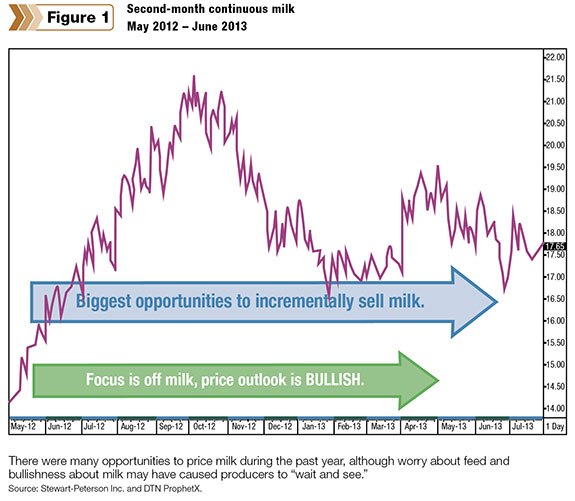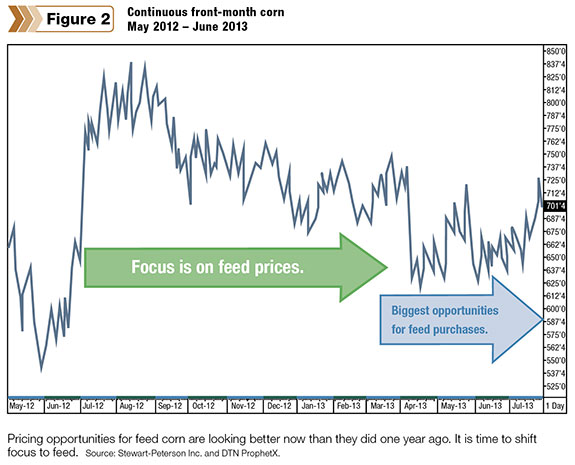It doesn’t matter where the market has been – only where it is going. We encourage producers to look forward and not base decisions on what has happened in the past.
At the same time, looking back can be instructive. Especially when we look back on what people were thinking and feeling about the dairy markets during a certain time period, what the markets actually did compared to those thoughts and emotions, and whether producers acted on emotion or not.
View a dairy market report update from Stewart-Peterson .
This exercise is sort of like looking at the ups and downs in your somatic cell count and comparing the numbers with management or employee actions during that same time period. The correlations can be instructive for future decisions.
For the period of June 2012 to June 2013, when we look at the correlation between what many dairy producers were saying they wanted to do with regard to marketing and what the market was actually doing, we find that an interesting truth emerges: The thing everyone is focused on is the opposite of what you should be doing at the time.
Let’s look at the fall of 2012. As the effects of the U.S. drought took hold, most producers who called our offices or visited with us out in the field wanted to talk about feed.

Yes, we helped producers make strategic purchases throughout that fall and winter so feed needs were covered; however, during that time period we were strongly encouraging producers to shift their thinking away from feed and look at milk.
Shifting the focus to milk was a challenge. Why? Because everyone was talking about milk’s potential to go up, up, up and stay strong into 2013. (We call that being “all bulled up.”)
As the winter progressed, some producers were locked into feed out of fear and leaving milk wide open out of bullishness.
Now, if you’ve read any of our writings in the past, you know that we advocate incremental milk sales (or feed purchases) aimed at methodically, over time, building the best possible weighted-average price for milk. ( Click here for a related story) This approach takes discipline in the face of headlines and a chorus of bulled-up voices all around you.
Our clients who continued to make disciplined incremental sales of milk in the fall and winter of 2012 and into the peak in April 2013 tell us that they are enjoying the fruits of those disciplined decisions.

They are turning their attention now to feed, looking for opportunities to lock in lower prices and increase their margins, maybe even building a cushion for a time period when the margin may not be exactly what they were looking for.
Again, the purpose of this “look-back” article is to use the benefit of hindsight to compare emotions at the time with what actually happened.
And we can see clearly: If it’s what everyone is talking about, it’s not what you should be focused on.
You can pretty much apply this principle to any market: The real estate market (no one buys houses when everyone is talking about how no one is buying houses), the local restaurant scene (no one goes to that restaurant because no one ever goes there) or the stock market (everyone is getting in because everyone is getting in right now).
Right now, what is everyone worried about? Producers may be concerned that they do not have enough milk sold. This fear makes them want to continue to wait with making sales, hoping prices will go back up to the $19 and $20 range.
In the meantime, they may be missing a great opportunity to capitalize on lower feed prices. I’m not saying all producers are in this camp; however, you may wish to examine where your focus is right now.
I challenge you to observe what everyone else is saying and think about shifting your focus to the opposite possibility. PD







